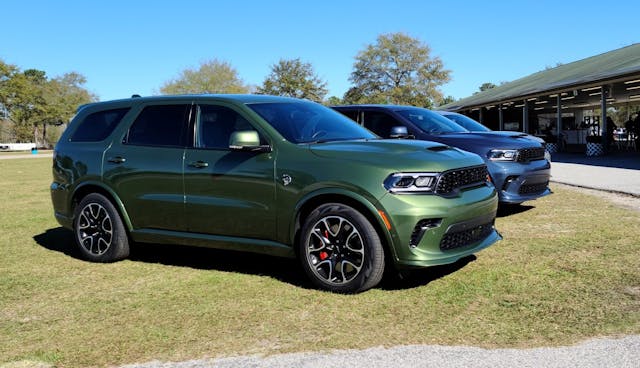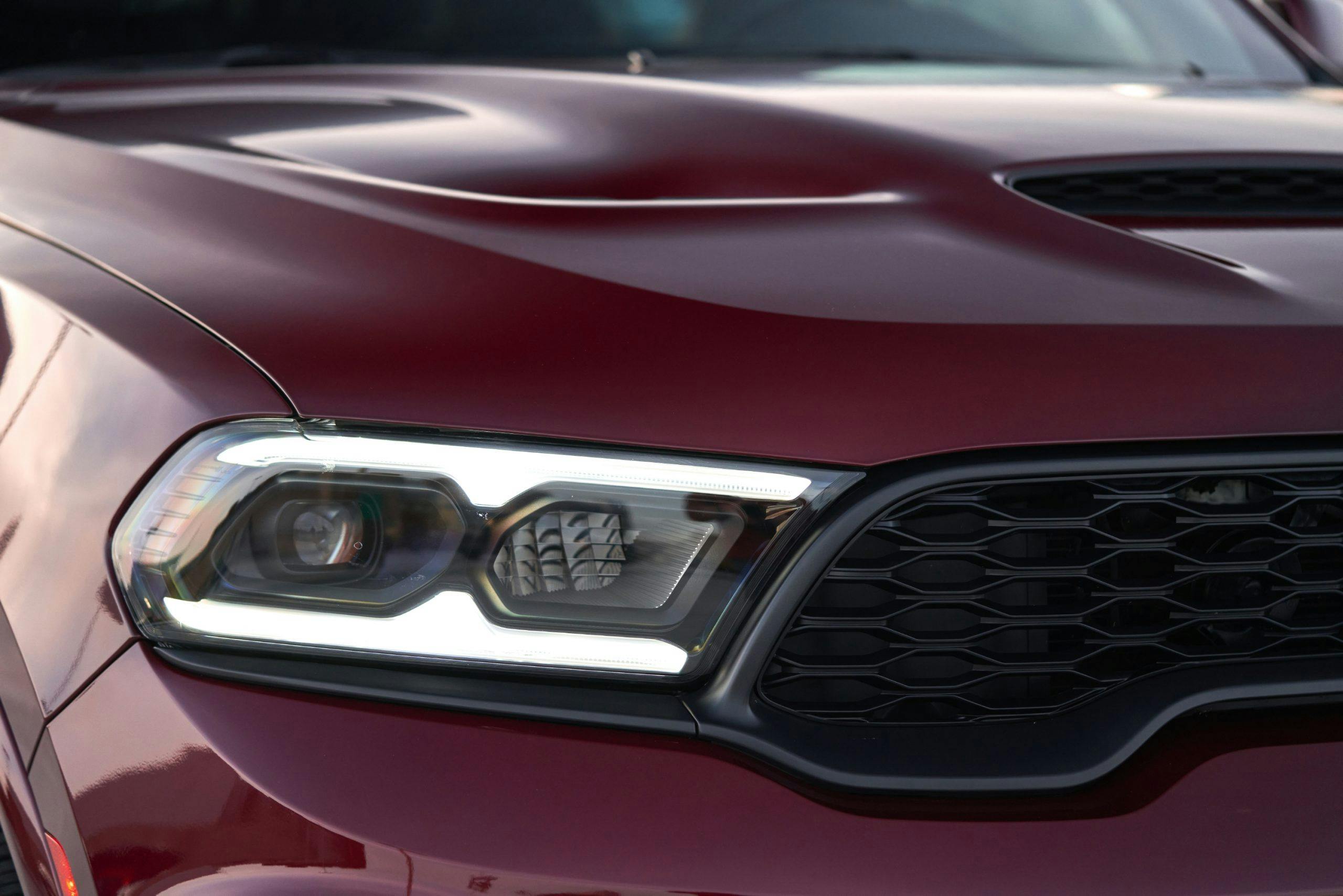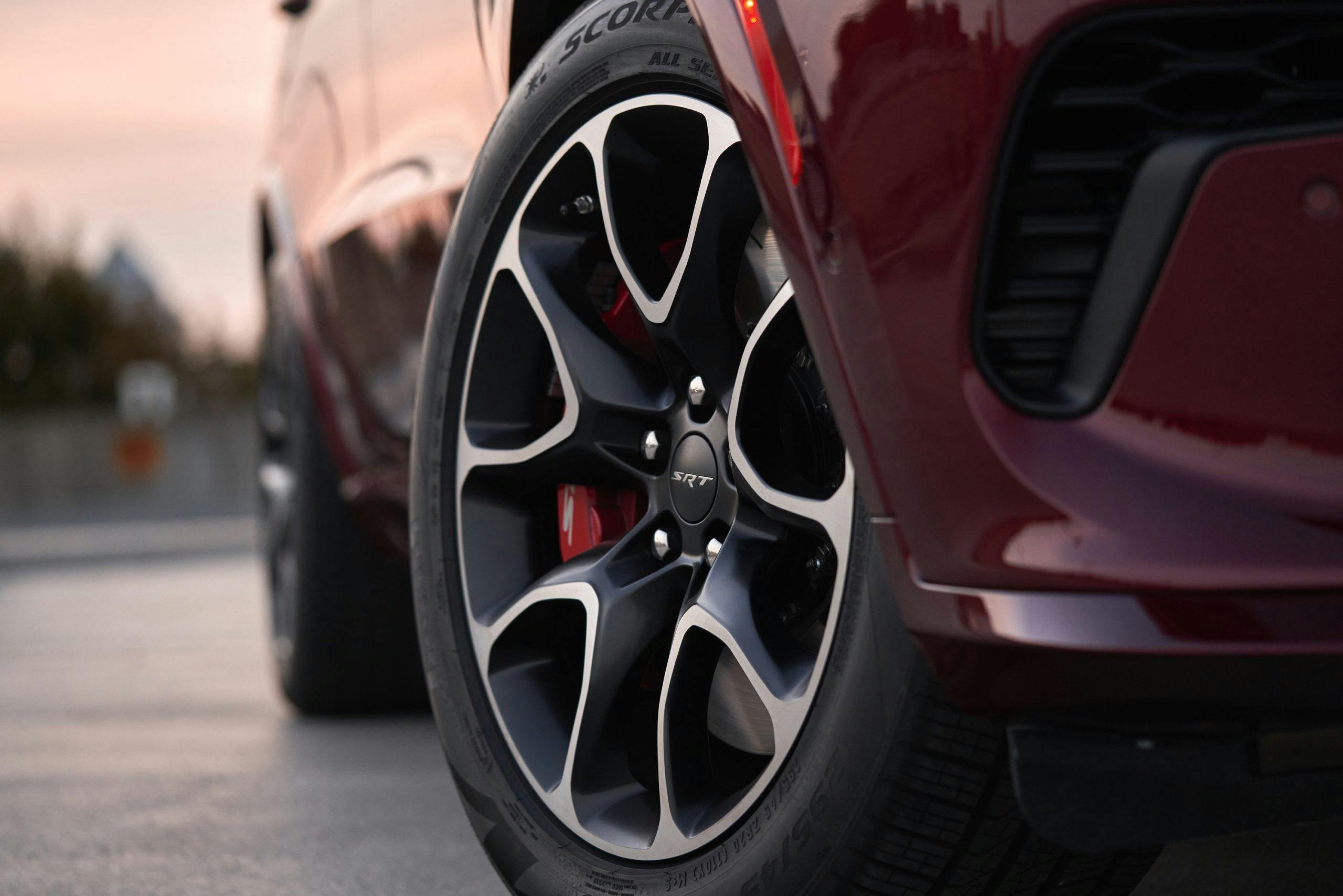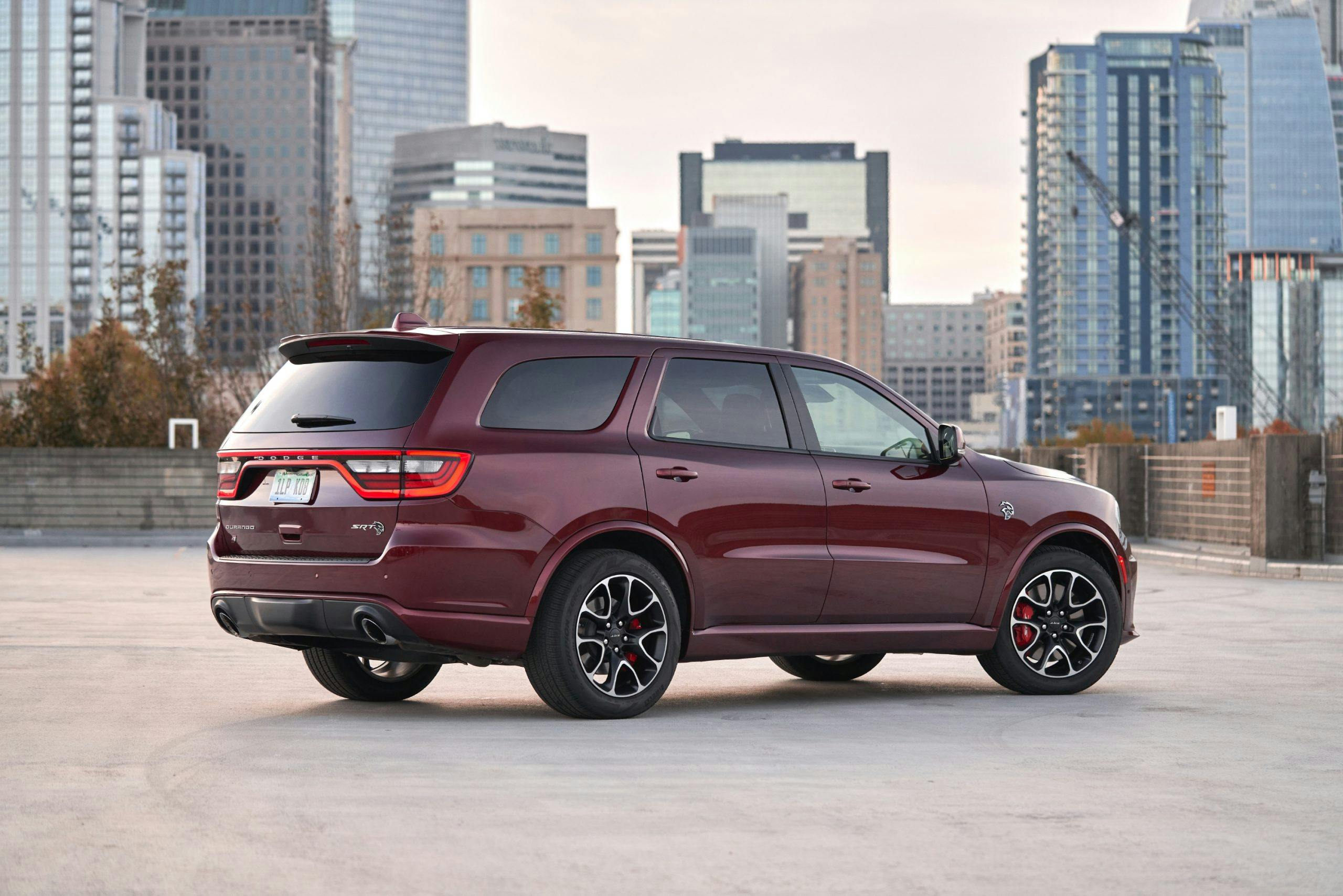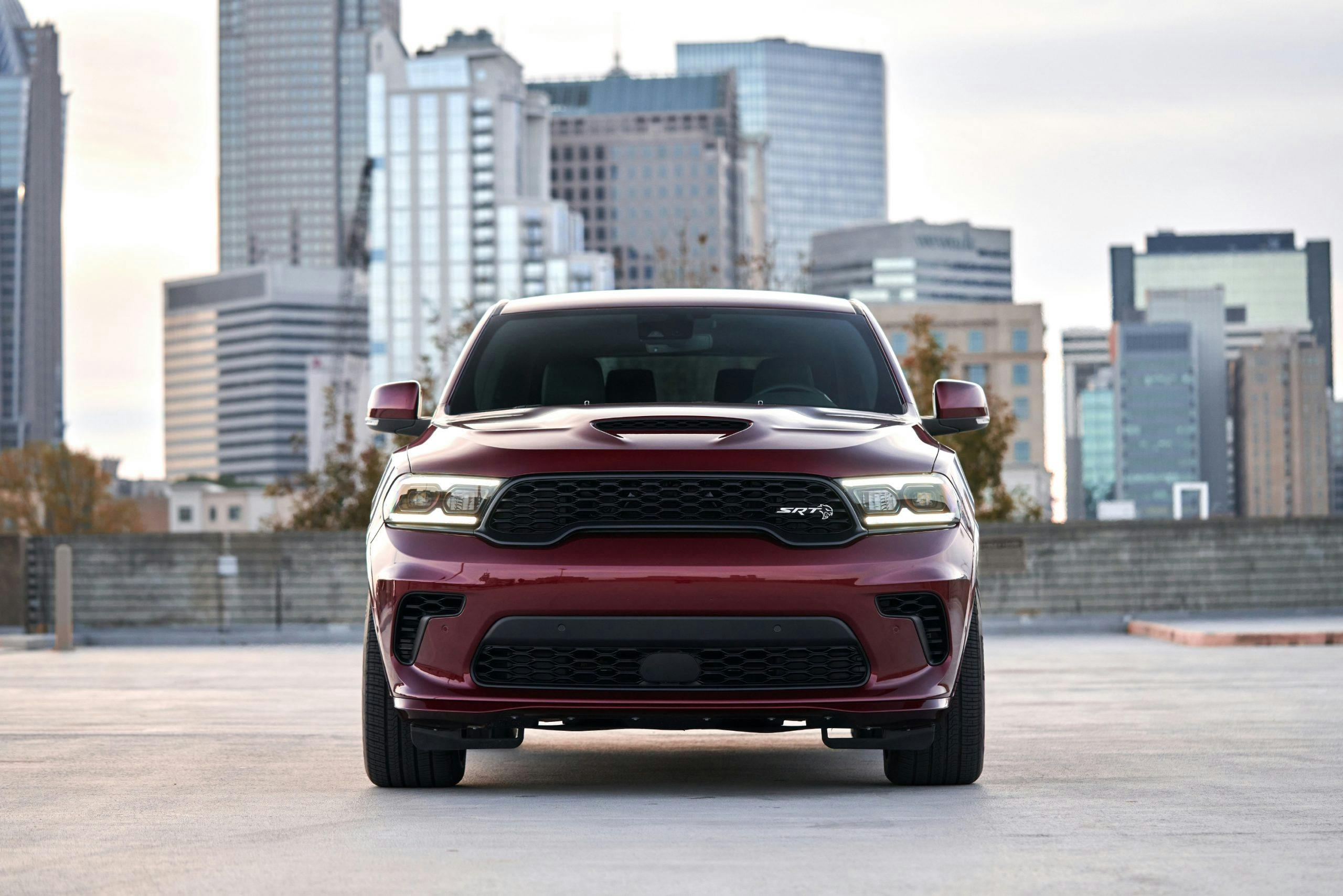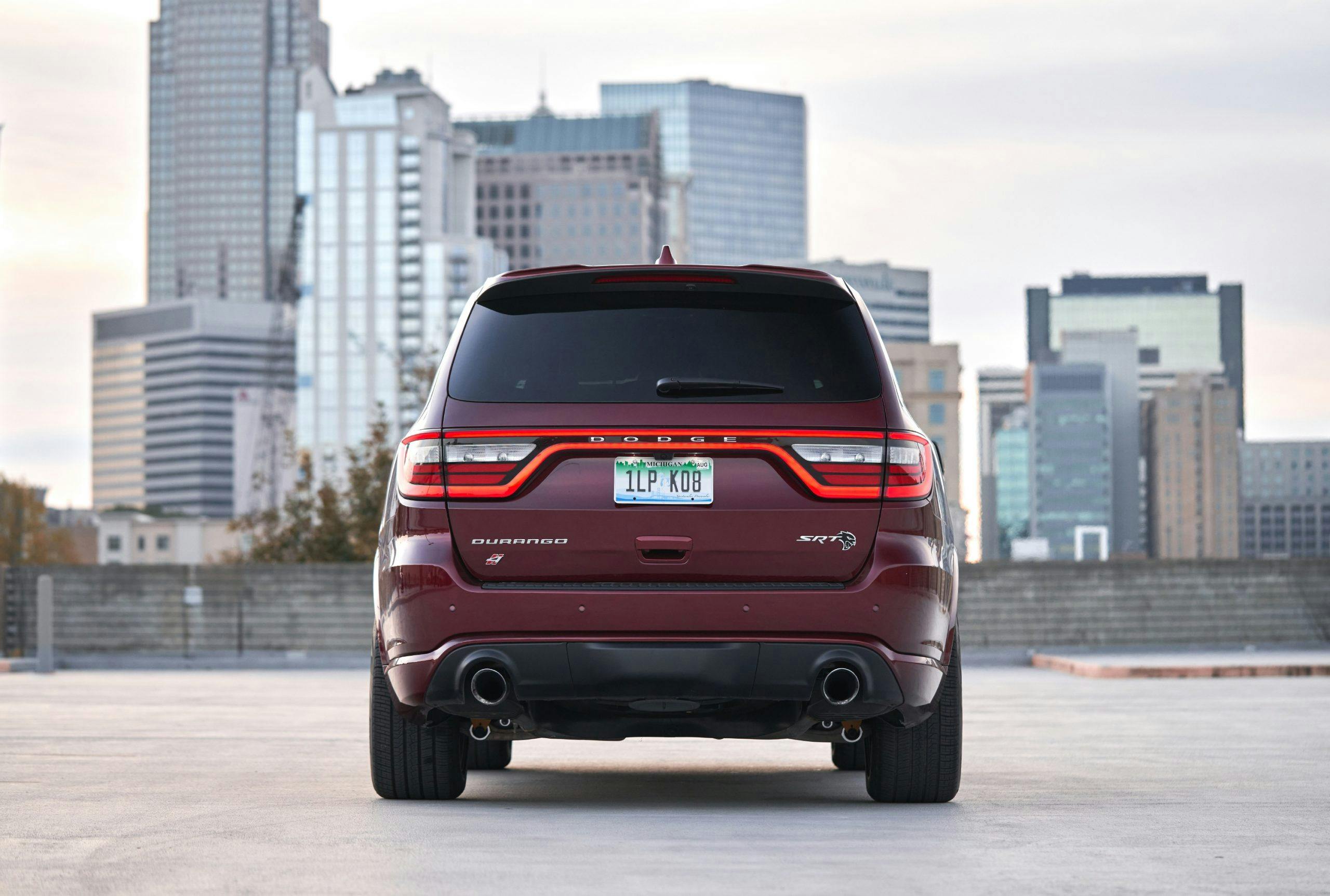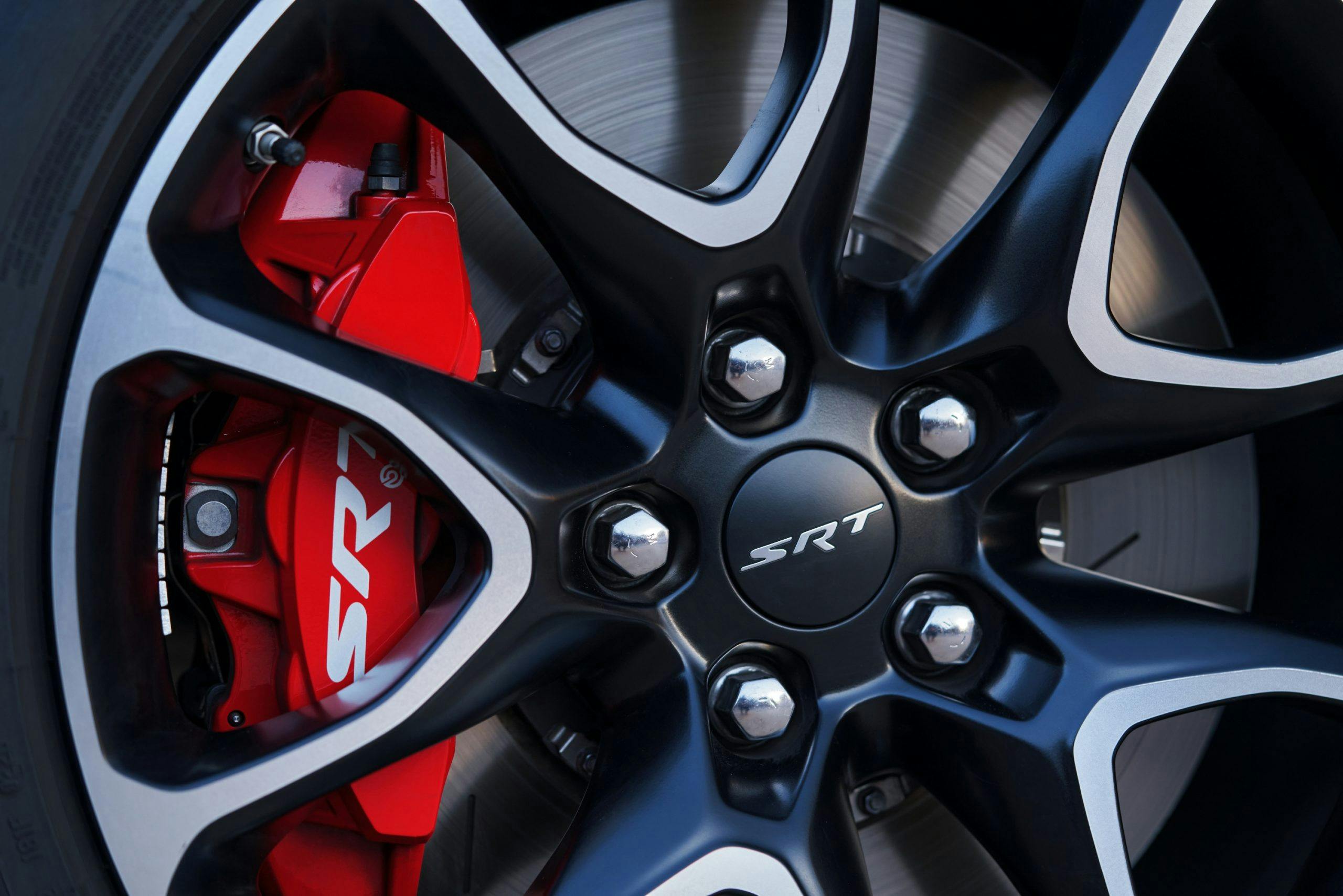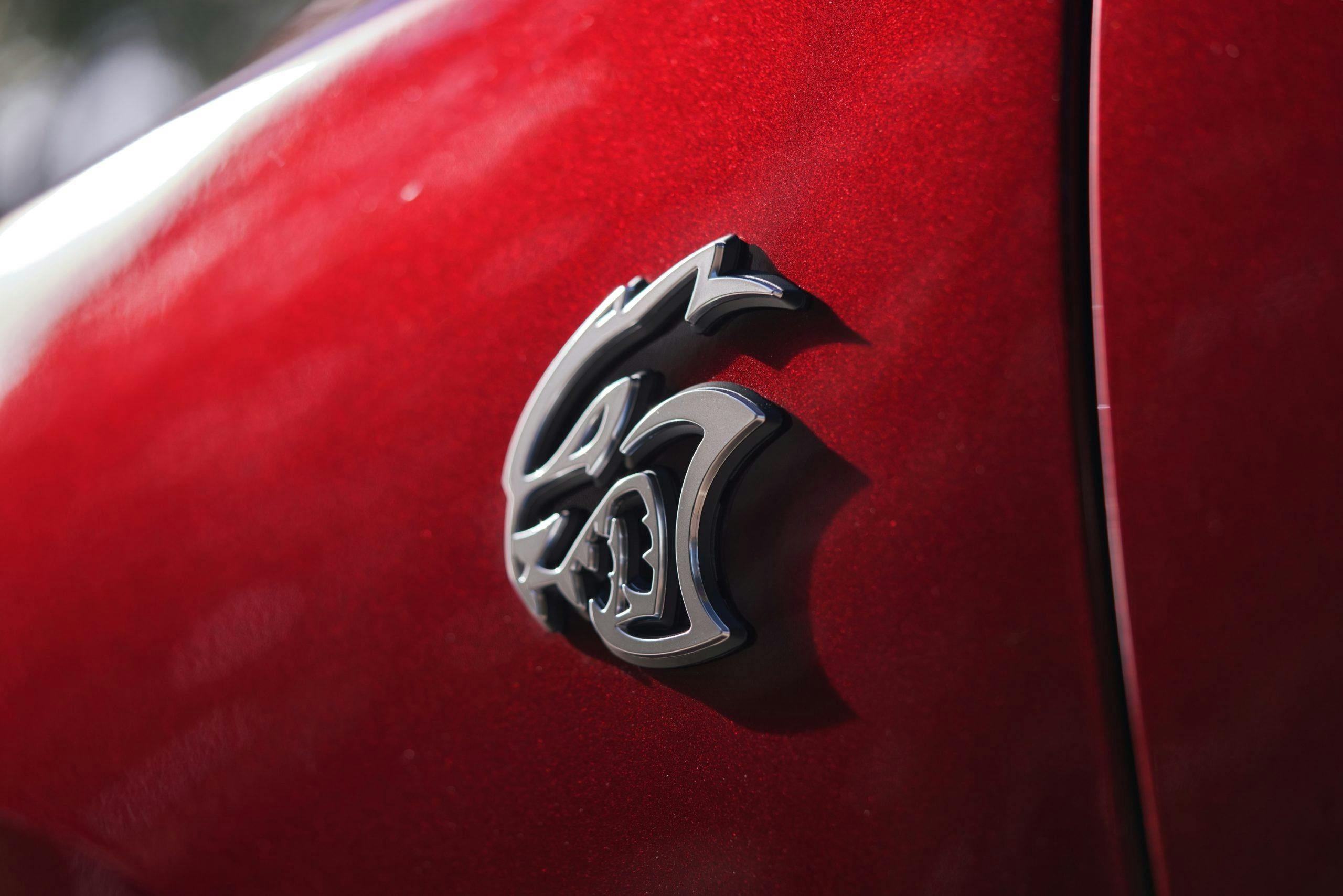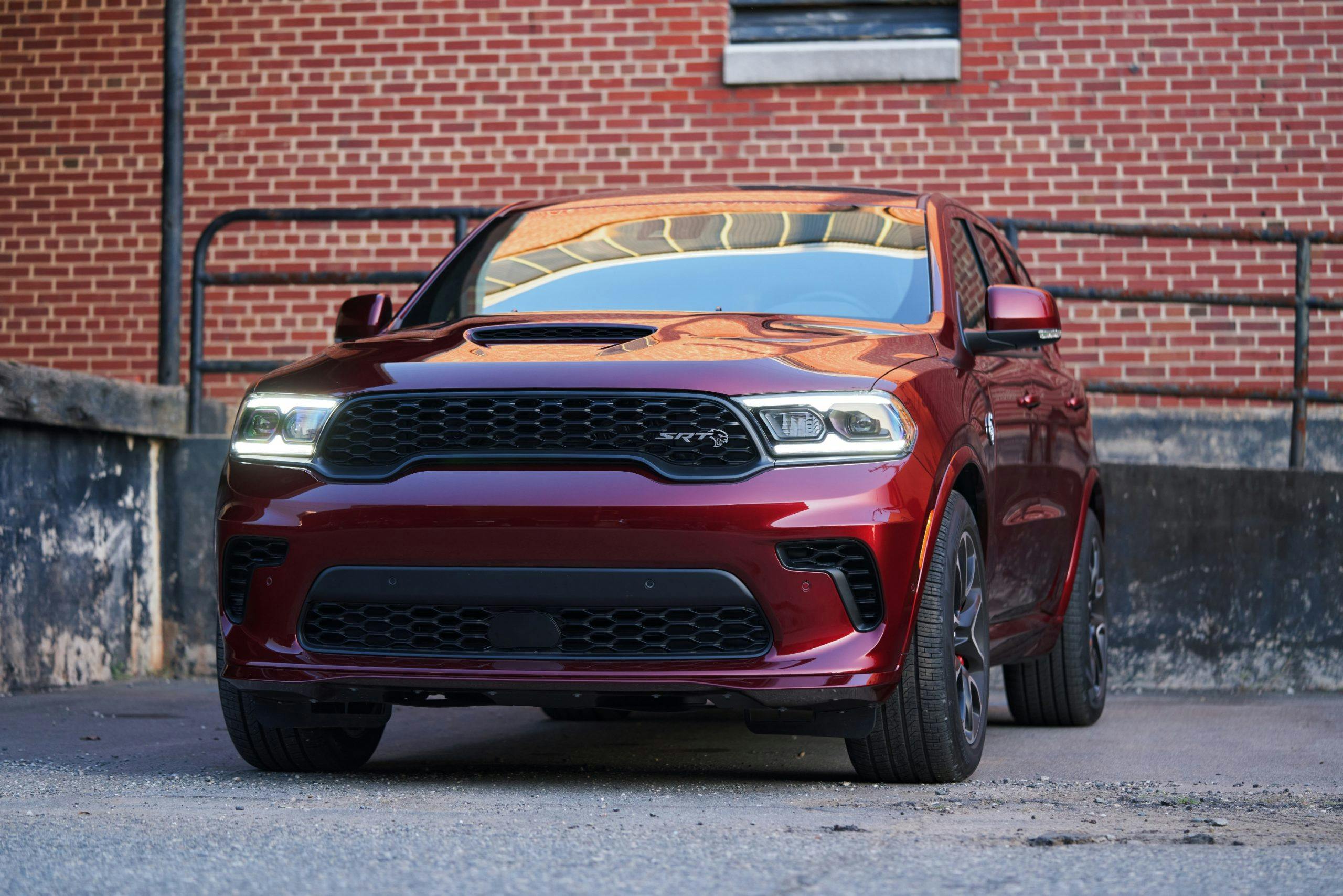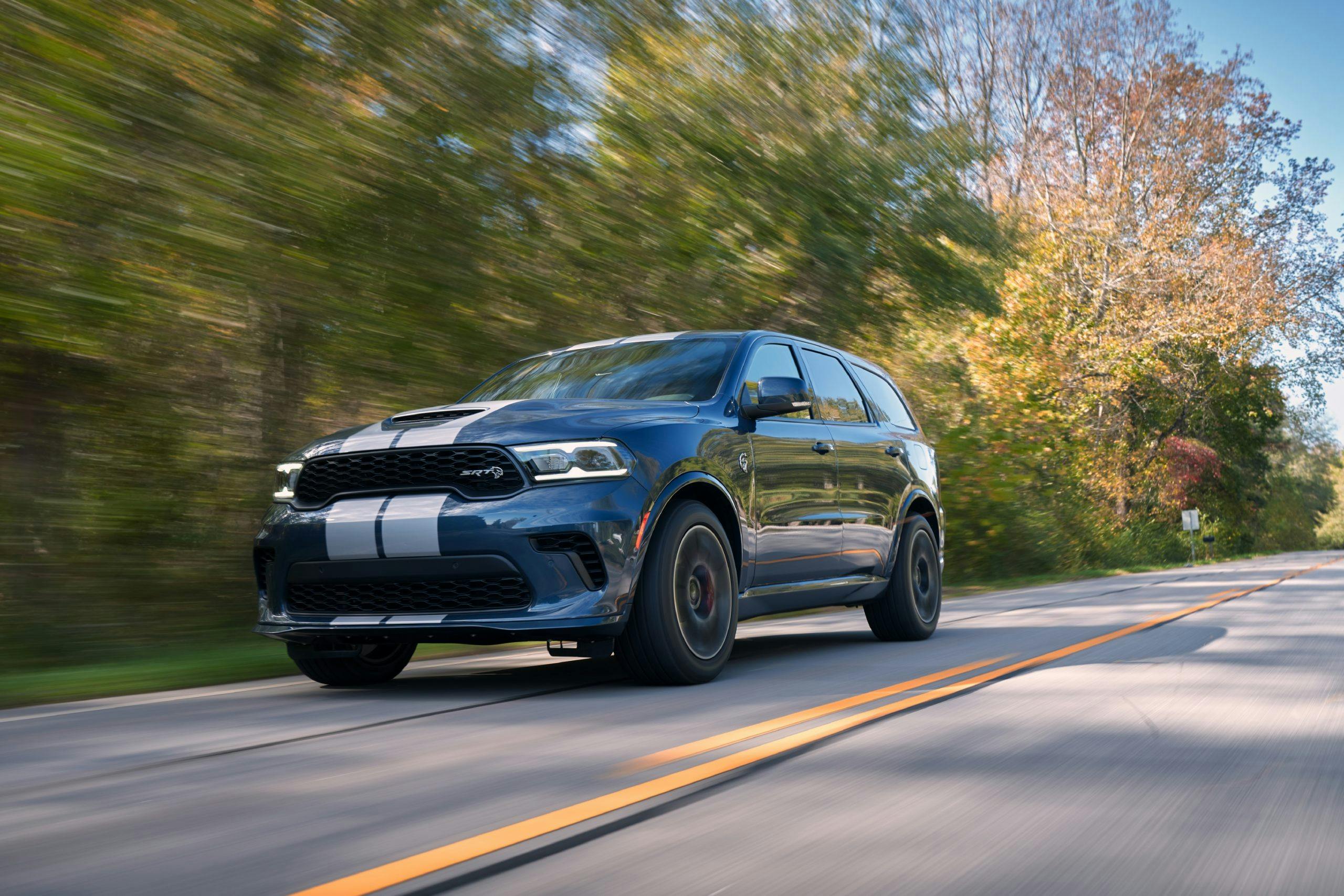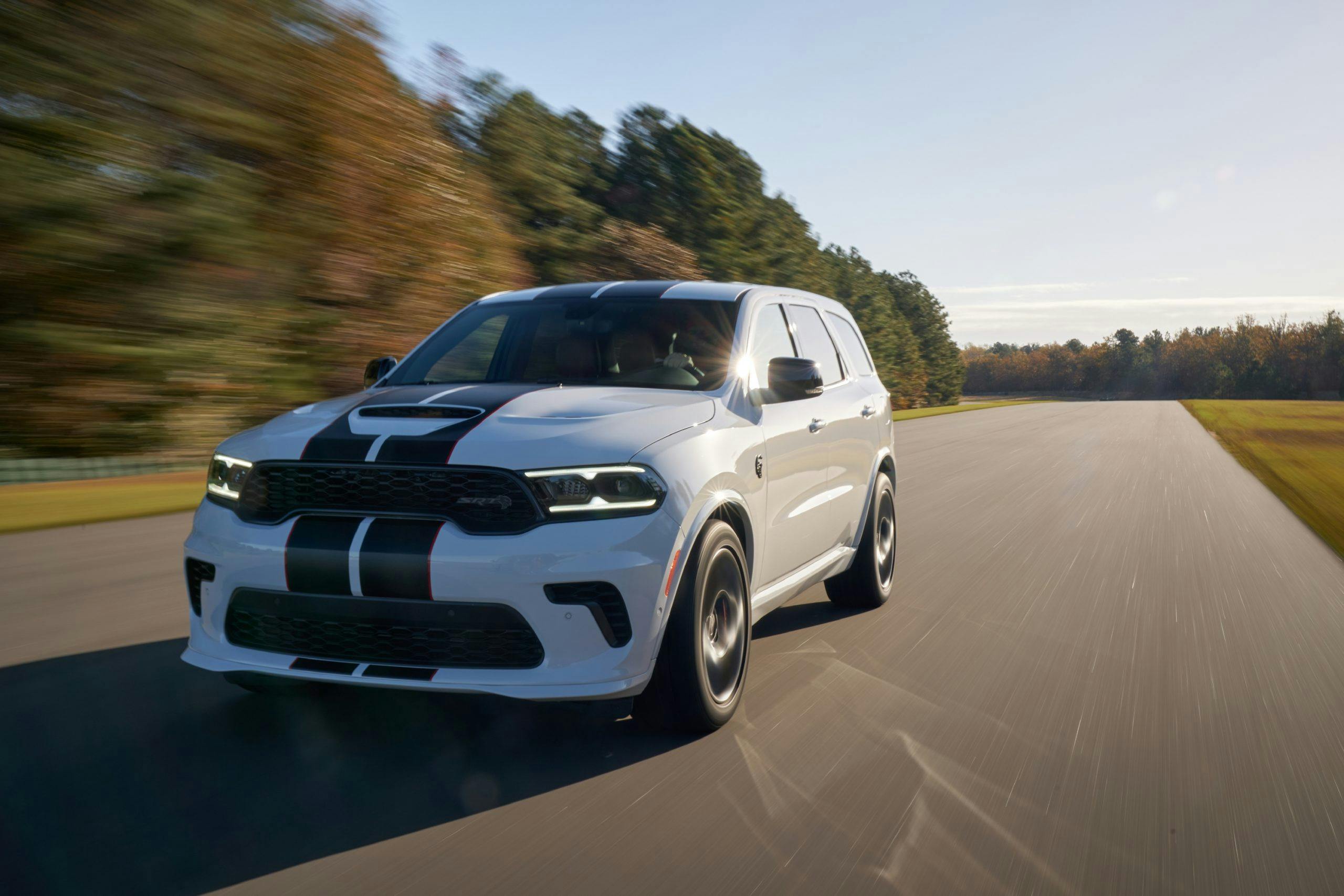Review: 2021 Dodge Durango SRT Hellcat
Stress and nervous tension are now serious social problems in all parts of the Galaxy, and it is in order that this situation should not be in any way exacerbated that the following facts will now be revealed in advance. The Durango in question is in fact the legendary Durango Hellcat, and it’s quite nice. The review shortly to be launched by a middle-aged club racer will result only in a few complaints about fuel economy, some mild but entirely unfeigned enthusiasm regarding the revised interior of said Durango, and the abuse of some “consumables,” including one set of OEM Brembo brake pads.
Alright. This review doesn’t need to exist, and the press preview for this vehicle didn’t need to take place. The Hellcat Durango will be on sale for less than a full model year. Any examples of said Hellcat Durango that don’t get pre-ordered via hefty deposits from known friends of a dealership will sit on showroom floors for about the half-life of francium-223. (22 minutes, if you’re curious.) At $82,490 to start and just under $90K fully loaded including Lamborghini-style “forged carbon” interior trim, the Durango Hellcat has no natural competition whatsoever. Do you need three rows of seating, the ability to pull almost nine thousand pounds, plus the availability of on-demand sub-twelve-second quarter-mile times almost regardless of surface or conditions? Then your list of possible car purchases is just one line long, and that line reads DURANGO HELLCAT, possibly with a line drawing of the Hellcat logo and/or a little SUV jumping over the Snake River. Seriously. What else are you going to buy? A BMW X7 M50i? That’s more Durango SRT 392 territory. This Hellcat wagon stands alone.

Alright, thanks for reading my review! See you next time!
Wait—you want to know what it’s like to drive? Out of sheer curiosity, maybe? Just to pass the time until your Hellcat Durango arrives? Very well, then. Let’s talk about it.
This is the tenth year of current-generation Durango production, and the second significant facelift for the big SUV, which shares most of its bones with the thoroughly excellent Jeep Grand Cherokee. All Durangos get a new driver-centric cockpit for 2021, with the center stack angled slightly towards the driver. This was a neat idea when BMW did it in the 1977 320i, and it’s a neat idea now. The touchscreen has been increased to 10.1-inch width, and the fifth generation of Uconnect is on board. If you know these vehicles, you won’t be surprised to hear that it’s very good, same as it has always been. This interior has to serve Durangos from $31K to $90K, and as you’d expect it’s a little better-suited to the former than to the latter. Hellcats are distinguished by big, comfy, supportive seats in Nappa leather, a flat-bottom steering wheel, and the availability of Forged Carbon (TM, I think) interior trim pieces. Expect the latter to impress the hell(cat) out of anyone who’s been in a Huracan; the average suburban resident, however, will think it’s badly-molded black plastic.
There’s nothing to surprise and delight in the interior; neither is there much to criticize. The visible metal shine you get with a Benz or BMW is conspicuously absent, but the majority of the materials do feel like they are a cut above that of the Japanese-branded and domestic competition. Certainly the Hellcat feels special enough from behind the light-up logo of the steering wheel, and the ergonomics are spot-on for fast driving.
Much like its Charger/Challenger showroom companions, the Durango actually shows a little better against the competition than it did on its debut. The past decade has seen most of the competition put on weight, lose power, and pump up the prices. On the low end, the Dodge faces a lot of lifted wagons with FWD-based powertrains that don’t measure up in terms of towing capacity, dynamic on-road behavior, or towing prowess. On the high end, as previously noted, it has no natural predators. In all variants, it simply drives very well, with outstanding NVH (noise, vibration, harshness) qualities, low wind noise, and excellent feedback through steering and brakes. The steamroller 295/45ZR20 Pirellis (your choice of Scorpion Zero all-season or P Zero summers) ride surprisingly well. Bad roads were hard to find in our test routes criss-crossing the border between North and South Carolina, but the ride/handling compromise is clearly aimed at people who will actually drive their 710-horse wagons every day.
The Durango Hellcat can be floored from a dead stop, even with the wheels cranked as one would do when turning right from a stop sign, and there will be virtually zero drama. This behavior is familiar from the Jeep Grand Cherokee Trackhawk, but the additional wheelbase and weight in the three-row truck make it even tamer under boost. The 60-mph mark appears almost immediately with no giggle or squirm from this funky powertrain, just an aircraft carrier’s worth of launch power. Moving through traffic, the hot tip is to half-throttle all your most outrageous overtaking moves, since there’s always enough torque on hand to shove the truck forward and it actually slows the process a bit if you command a kickdown from the transmission. On the street, the brakes feel fade-free and the chassis delivers a surfeit of grip.
In the benighted old days of autowriting, my august predecessors would say that a particularly well-behaved performance car could be lent to one’s wife or grandmother without ill effects. This being 2020, I’ll use my departed, and much missed, grandfather as the yardstick. He never drove anything more powerful than a 368-powered Eldorado—but he could operate this Durango without danger. Nor would he wish for the tamer R/T or even SXT model. The magic here is how the Hellcat powertrain only really makes itself known when you’re driving in anger. Granddad could soft-pedal it around Clearwater, Florida, for years without knowing it had 710 horsepower. I love the fact that there’s no overt aggression displayed on initial throttle opening, which is a common trick used to make sluggish SUVs feel less so. It’s not necessary here, so it’s not used.

Having established the Durango Hellcat’s bona fides as an over-the-road vehicle, the Dodge boys then gave me a chance to drive it around Carolina Motorsports Park for six laps. The existing Durango SRT 392 was also provided, as a baseline. Truthfully, most Hellcat intenders would be satisfied with the existing SRT. It’s plenty fast and it’s thoroughly composed at race-track pace. The Hellcat is the same… plus a vicious rush from corner exit to brake-smoking corner entry. The engineers on the scene swore to me they weren’t swapping brakes and tires, and indeed I didn’t see any such behavior take place throughout the course of a day in which each truck probably did a hundred laps, but if you drove this vehicle to its limits for a full thirty-minute lapping session you’d likely come into pitlane having just run up a bill for two or three thousand dollars’ worth of rubber and copper-free (for 2021, by government fiat!) friction material.
No timing was permitted during the event, but my initial impression was that the Durango Hellcat runs at SCCA/NASA smallbore sedan pace around a track. It’s perhaps 10 mph slower through each turn than a Spec Miata on fresh tires, but it arrives at each brake zone at a speed between 10 and 30 mph above that of the Miata. During heavy braking there is light but not worrisome wobble in the rear end, about what you’d get in an old 986 Boxster or E36 M3. Of course it understeers, although Dodge was kind enough to put it on “square setup” equal tire width front and rear, but you can actually get a little bit of mid-corner rotation on throttle. Not like you can with a sedan Hellcat, because the front axles will get involved immediately, but enough. Corner exit couldn’t be easier. Just look at the exit, unwind the wheel, and apply full power. Shifting the eight-speed ZF yourself doesn’t make much difference. Body roll is very low. It’s as if the Durango were always meant to have this much power in this application. Maybe it was. Who knows.
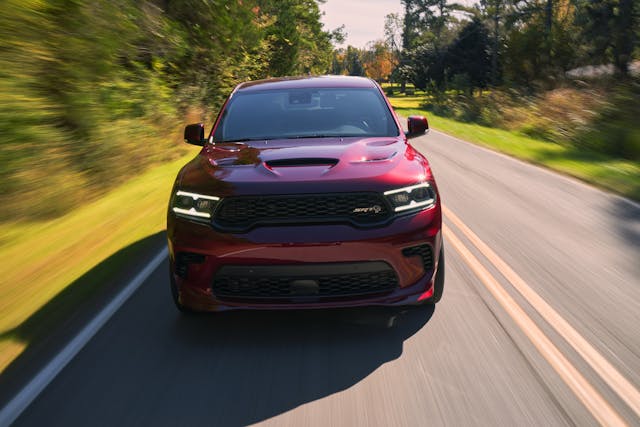
I can’t adequately stress how much more fun this is to drive than, say, a Cayenne or BMW X-M-whatever. FCA’s SRT team is deeply committed to the idea that the Hellcat-powered vehicles are meant to be enjoyable in operation, rather than simply serving as a testament to ’Ring time or purchasing power. If you owned this vehicle, you’d enjoy taking it around a race track. Someone, somewhere, will use this at NASA events as both tow vehicle and time-trial competitor. You bring the race car to the race and then you run a second class in your truck. Why not?
What do you get for ninety grand? A supremely cheerful three-row SUV that can handle towing duties or track time with equal aplomb, plus all the road-going virtues of the lesser Durangos. Speaking purely as an individual, as opposed to a member of Hagerty’s diligent Valuation team, I would also imagine it will be hard to lose a lot of money on this thing. It’s likely to be worth quite a bit to someone for quite a long time. Neither a self-parody nor a lash-up mash-up, the meeting of Durango chassis and Hellcat motor instead feels somewhat predestined. In short, it’s your very own Infinite Improbability Drive. Don’t get stressed about it.
2021 Dodge Durango SRT Hellcat
Price: $80,900 plus destination and options.
Highs: Just great to drive under all circumstances, and very fast. Doesn’t feel in any way like a “tuner car” or an unbalanced proposition.
Lows: Your neighbor will think you spent thirty grand on it. You will spend thirty grand fueling it. You wouldn’t want to be a member of any country club that would agree to valet park it up front.
Summary: FCA will sell every one it can build, and with very good reason.
